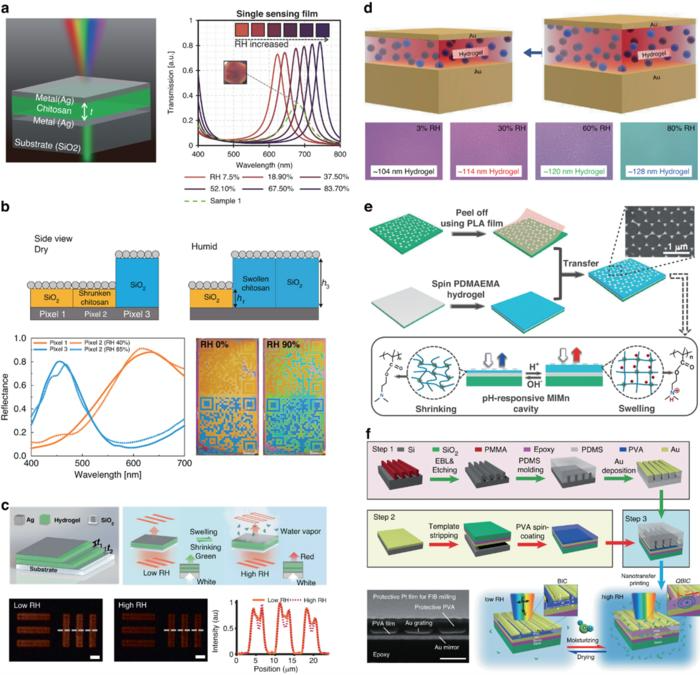Modern technology relies heavily on photonic devices, which control light through films and structures to enhance functions through concepts like resonance and interference.
 Diverse Applications of Photonic Devices Integrated with a Two-Dimensional Hydrogel Thin Film. Image Credit: Microsystems & Nanoengineering
Diverse Applications of Photonic Devices Integrated with a Two-Dimensional Hydrogel Thin Film. Image Credit: Microsystems & Nanoengineering
Precision light control is now possible because of advanced designs like photonic crystals and metasurfaces made possible by advancements in micro/nanofabrication.
After manufacturing, these gadgets, however, often lack flexibility. The necessity for post-fabrication flexibility in photonic devices is addressed by hydrogels, which are known for their responsive and tunable nature. This combination of dynamic optical qualities with biocompatibility offers a viable option.
A review discussing hydrogels in photonics and their potential to transform the field was published in the journal Microsystems & Nanoengineering on January 1st, 2024. The review highlights how these hydrogels allow devices to adjust and react to their surroundings, potentially leading to major advancements in biomedicine and technology.
The article focuses on creating dynamic photonic devices by utilizing the unique characteristics of hydrogels. Hydrogels, which are well-known for being pliable, interact with water molecules by applying different forces, which allow the molecules to swell and expand.
They are able to adjust their optical characteristics in response to external stimuli, such as variations in pH and temperature because of this feature. The study explores a number of fabrication methods, including electron beam lithography and photopolymerization, to create hydrogel structures at the nanoscale.
Under UV light, hydrogels can form films and structures, thanks to photopolymerization, and by breaking the molecular bonds inside the hydrogel, electron beam lithography makes it easier to create complex nanostructures. These methods open the door to photonic devices based on hydrogel that can modify light in significant, adjustable ways. Designed objects can function as dynamic optical cavities or nanocavities, providing improved optical responses in reaction to external stimuli. With its novel methodology, photonics is poised to enter a new era of gadgets with never-before-seen responsiveness and adaptability.
The integration of hydrogels into photonics marks a paradigm shift. We're not just tweaking existing technologies; we’re reimagining them to be more adaptable, responsive, and integrated with our environment.
Junsuk Rho, Professor and Leading Researcher, Department of Chemical Engineering, Pohang University of Science and Technology
With this finding, a new era in photonics begins one in which devices become active agents in the world around them rather than just passive light conduits. It has revealed how hydrogels can revolutionize the field of active photonics. This discovery has the potential to completely change the way people interact with photonic devices, having an impact on anything from commonplace technology to specialist research apparatus.
Journal Reference:
Ko, B., et al. (2024). Hydrogels for active photonics. Microsystems & Nanoengineering. doi.org/10.1038/s41378-023-00609-w.